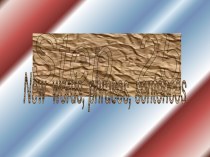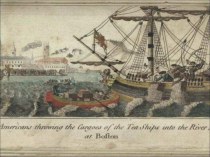- Главная
- Разное
- Бизнес и предпринимательство
- Образование
- Развлечения
- Государство
- Спорт
- Графика
- Культурология
- Еда и кулинария
- Лингвистика
- Религиоведение
- Черчение
- Физкультура
- ИЗО
- Психология
- Социология
- Английский язык
- Астрономия
- Алгебра
- Биология
- География
- Геометрия
- Детские презентации
- Информатика
- История
- Литература
- Маркетинг
- Математика
- Медицина
- Менеджмент
- Музыка
- МХК
- Немецкий язык
- ОБЖ
- Обществознание
- Окружающий мир
- Педагогика
- Русский язык
- Технология
- Физика
- Философия
- Химия
- Шаблоны, картинки для презентаций
- Экология
- Экономика
- Юриспруденция
Что такое findslide.org?
FindSlide.org - это сайт презентаций, докладов, шаблонов в формате PowerPoint.
Обратная связь
Email: Нажмите что бы посмотреть
Презентация на тему Bologna Process
Содержание
- 2. The purpose of the Bologna Process (or
- 3. Before the signing of the Bologna declaration,
- 4. The Bologna Process currently has 46 participating
- 5. Current signatories and thus members of the
- 6. FRAMEWORKThe basic framework adopted is of three
- 7. GOALSit is easy to move from one
- 8. ACADEMIC ASPECTSThe vocational three-year degrees are not
- 9. Since the mid-90s, Ukraine took steps to
- 10. The requirement of 60 ECTS per year
- 11. Скачать презентацию
- 12. Похожие презентации
The purpose of the Bologna Process (or Bologna Accords) is to create the European Higher Education Area by making academic degree standards and quality assurance standards more comparable and compatible throughout Europe, in particular under the











Слайд 3 Before the signing of the Bologna declaration, the
Magna Charta Universitatum had been issued at a meeting
of university rectors celebrating the 900th anniversary of the University of Bologna – and thus of (Western) European universities – in 1988.Слайд 4 The Bologna Process currently has 46 participating countries,
whereas there are only 27 Member States of the
EU.Слайд 5 Current signatories and thus members of the "European
Higher Education Area" are:
from 1999: Austria, Belgium, Bulgaria, the
Czech Republic, Denmark, Estonia, Finland, France, Germany, Greece, Hungary, Iceland, Ireland, Italy, Latvia, Lithuania, Luxembourg, Malta, Netherlands, Norway, Poland, Portugal, Romania, Slovakia, Slovenia, Spain, Sweden, Switzerland, United Kingdomfrom 2001: Croatia, Cyprus, Liechtenstein, Turkey
from 2003: Albania, Andorra, Bosnia and Herzegovina, Holy See, Russia, Serbia, Macedonia
from 2005: Armenia, Azerbaijan, Georgia, Moldova and Ukraine
from May 2007: Montenegro
Слайд 6
FRAMEWORK
The basic framework adopted is of three cycles
of higher education qualification.
1st cycle: typically 180−240 ECTS credits,
usually awarding a Bachelor's degree.2nd cycle: typically 90−120 ECTS credits (a minimum of 60 on 2nd-cycle level). Usually awarding a Master's degree.
3rd cycle: Doctoral degree. No ECTS range given.
In most cases, these will take 3, 2, and 3 years respectively to complete. The actual naming of the degrees may vary from country to country.
Слайд 7
GOALS
it is easy to move from one country
to the other (within the European Higher Education Area)
– for the purpose of further study or employment;the attractiveness of European higher education has increased, so that many people from non-European countries also come to study and/or work in Europe;
the European Higher Education Area provides Europe with a broad, high-quality advanced knowledge base, and ensures the further development of Europe as a stable, peaceful and tolerant community benefiting from a cutting-edge European Research Area;
there will also be a greater convergence between the U.S. and Europe as European higher education adopts aspects of the American system.
Слайд 8
ACADEMIC ASPECTS
The vocational three-year degrees are not intended
for further study, so those students who also want
to advance to a master's degree will be at a disadvantage.The master's degree effectively becomes the minimum qualification for a professional engineer, rather than the bachelor's degree.
The academic three-year degrees prepare only for continuing towards master's, so students who enter the workforce at that point will not be properly prepared. Yet they would have the same academic title as the fully trained vocationally educated engineers.
The end-result of the change is that the agreements between professional bodies will require reevaluation in some cases as qualifications change.





























